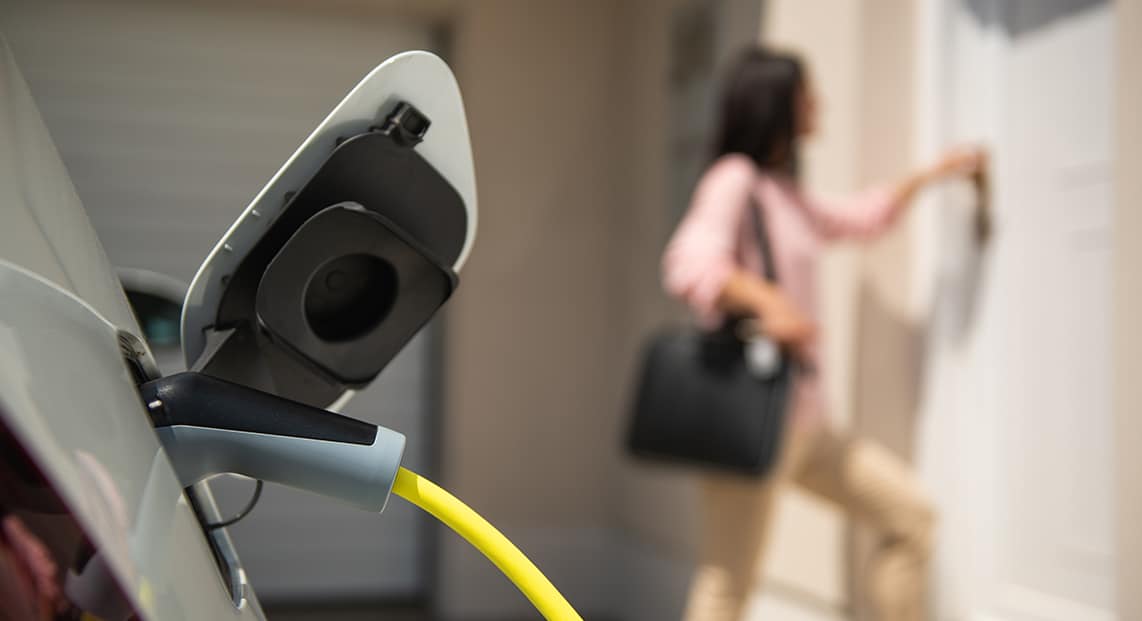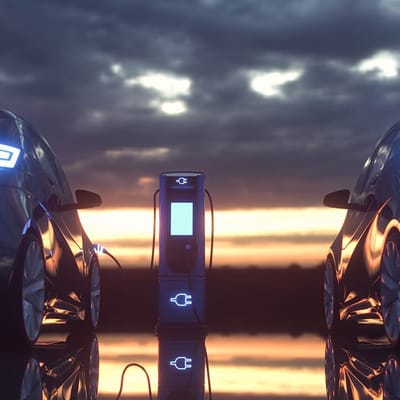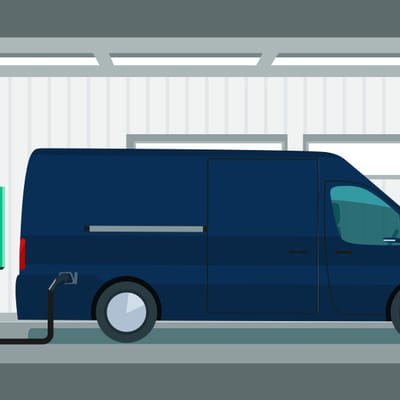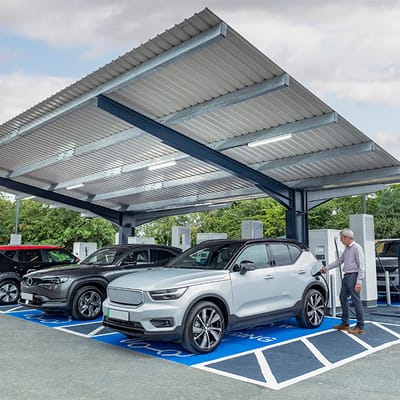- SolutionsWith a strategic solution that works for you and your business, you can unlock revenue-generating opportunities and begin managing your fleet as an investment.Overview
- About UsWhen Holman was founded in 1924, we set something positive in motion. Our consistent focus on people and our commitment to integrity make us who we are today.Overview
 Join Our TeamWe’re not just in the automotive business, we’re in the people business. Join us for the ride.Browse Careers
Join Our TeamWe’re not just in the automotive business, we’re in the people business. Join us for the ride.Browse Careers
Plugging Fleet EVs Into At-Home Charging Stations
Holman Marketing
July 20, 2021

So you’ve been looking at electric vehicles (EVs) as your next fleet investment. You’ve answered the basic questions, “what is EV charging?”, “how do EV charging stations work?”, and “how many types of EV charging methods are there?”
Perhaps, one more question remains: How will you actually charge them?
The key to a healthy EV fleet is to establish charging bases, or designated areas where your fleet can fully charge before getting back on the road.
The idea of “fueling” your fleet right in your drivers’ garages or driveways can seem distant to many, but innovations in EV technology have made at-home charging more accessible than ever. It starts with understanding your team’s charging foundation and building out a strategy from there.
At-home charging is most successful when your drivers have a designated space on their properties to park your fleet vehicles, and independent electrical sources to fund that charge. Luckily, EV chargers are weatherproof, meaning an uncovered driveway works just as well as a garage or covered space.
The next step to understand is how to fund this new fuel source for your drivers. You need to consider the following in order to calculate how much it will cost to charge an EV:
- The average price per kilowatt-hours (kWh) your driver pays in their area
- The number of miles per kWh your vehicles can drive
- Your driver’s monthly mileage
These three elements will help you understand approximately how much each driver will be charged each month on their home electricity bill, and give you ground upon which to build a reimbursement plan. Your data is a great first step to making sense of these costs.
EV charging looks like most other electrical items. It comes equipped with an Electric Vehicle Supply Equipment (EVSE) charging plug that goes into your vehicle. From there, you need to take a look at the properties of your drivers and the EVs you want in your fleet and ask the following questions:
- Does the driver have a grounded outlet that is at least 120-volt (V)?
- Does the EVSE cord reach the outlet?
- What level of charging does the vehicle require?
While a traditional, 120-V outlet will charge most EVs as a Level 1 charge-point, it takes a long time and can be costly. It’s also important to note that EVs will not charge on basic household extension cords, so drivers might need longer cords purchased through your vehicle supplier, which is more expensive than traditional extension cords.
If you’re into EVs for the long haul, a Level 2 charger is a great way to charge faster and more efficiently. It’s a case-by-case basis, but many electrical services work with homeowners and businesses to install 240-V, Level 2 chargers directly into a home’s electrical system, usually alongside where the home’s electrical box is situated. In that case, make sure your driver’s electrical box aligns with their charging location.
Of course, at-home charging isn’t for everyone. You might want to consider hybrid or alternative fueling options in certain situations, including when your drivers are:
- Renters or flat owners without designated parking and charge points
- Residents in urban areas without reserved parking spaces
- Living with street parking spaces which could require an extended connection that is interrupted by pedestrians
- In homes that cannot accommodate higher voltage charging outlets
What is the best option for you? Contact us and our fleet experts will go over what is on the market today and what works for your business.
Related Resources
Explore more related industry news, insights, and developments.









